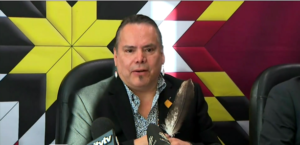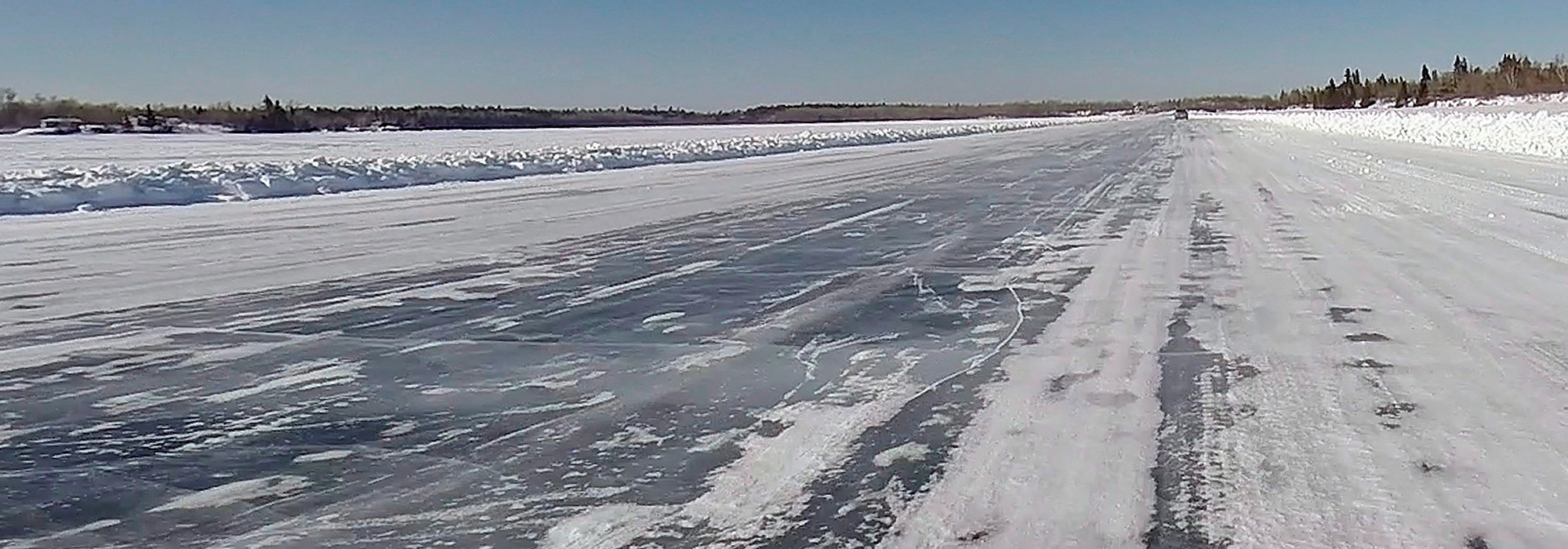
It is too early to tell what the coronavirus infection rates will be in First Nations, Inuit communities or amongst Métis people – but if we use past government practices as an indicator, we clearly have reason to worry.
During the H1N1 outbreak in 2009, Indigenous peoples made up just 4.3 percent of the population, but accounted for 27.8 percent of all hospital admissions, 26 percent of critically ill patients in intensive care units and 18 percent of deaths during the first wave of infections. Of those hospitalized, 63 percent were First Nations. The government response to addressing the outbreak in First Nations was particularly fraught with problems. Health Canada delayed sending alcohol-based hand sanitizers to First Nations during that period over fears of abuse, and sent body bags to Wasagamack and God’s River First Nations instead of much needed healthcare workers.
It is important that First Nations receive priority attention during this pandemic response – First Nations are disproportionately represented in all of the socio-economic indicators for poor health. While there are complex calculations that go into risk determinations, it is critical to reflect on the H1N1 experience, the existing health crises in First Nations, and the specific risk factors that First Nations people face.
Ministerial briefing notes provided in 2018 indicated the lifespan of Indigenous people is 15 years less than that of non-Indigenous people; infant mortality rates are 2 to 3 times the national average; and infectious disease rates 4 times higher than that of non-Indigenous people. Governments have purposefully and chronically under-funded essential social services including food, water, housing and health-related offerings on First Nations reserves. That is why tuberculosis rates are 40 times higher among First Nations.
There are myriad other risks that set First Nations apart from the rest of the population. Many First Nations still do not have access to clean water, local doctors, and adequate health facilities, especially in remote communities. Chronic over-crowding in housing is another major problem.
Indigenous people represent a staggering 30 percent of those incarcerated in federal prisons and are overrepresented in youth correctional facilities and group homes – none of which are institutions known for their social distancing, access to adequate healthcare or hygiene. Indigenous people make up the majority of the homeless and those using homeless shelters. In all these cases, First Nations make up the majority.
The early signs of how the government is addressing the specific needs of First Nations are not promising. Ottawa announced a “distinctions-based” community support fund of $305 million (out of $82 billion in nationwide measures) to address pandemic measures in “Indigenous communities,” but did not provide details on what funds are earmarked for specifically for First Nations. Already, some First Nations are reporting unacceptable delays in accessing critical funds and medical supplies, let alone the details around a concrete plan of action. Indigenous Services Canada’s description of COVID-19 preparedness is very general.
The original federal pandemic response team did not even include the Indigenous Services Minister, Marc Miller. He is now part of the team, but the early federal response to First Nations has been wanting. The plan to designate tents to be sent to remote, northern First Nations to stand in as testing units ignores the fact that many of those communities are still in their winter season.
Some First Nations in northern Ontario are speaking out against the “low-risk” designation given to their area hospitals, saying this could delay support for their Nations. This haphazard and delayed reaction by governments has led to numerous First Nations and First Nation organizations declaring states of emergency in Alberta, Saskatchewan, Manitoba and Ontario. Their hope is that federal and provincial government will act urgently with a preventative mindset instead of waiting for infections to appear in First Nations.
The single most important thing right now is to have a comprehensive pandemic prevention and response plan that meets the elevated risks in First Nations (especially remote First Nations). This plan must be coordinated and implemented in partnership with First Nations. Communication is key and it must lead to tangible action. No First Nation wants to hear “We’ll get back to you,” or “We have to wait for authorization.” Days matter in a pandemic as we have seen in countries such as Italy.

If this means that Canada must activate the military to help bring assistance to Indigenous communities, then so be it. The military has been used to oppress First Nations and dispossess them of their ability to sustain themselves as self-determining Nations. The military can now be used to bring urgent supplies and build critical infrastructure like houses, medical units and water systems; and act as back-up medical transportation. Every single First Nation should be provided with enough food, water and medical supplies to sustain a prolonged isolation period. Specific consideration should be given to northern communities, which cannot afford the steep prices and lack of healthy options at northern stores.
Both levels of government must provide First Nations with immediate, adequate and flexible funding to each First Nation so they can tailor their pandemic preparations and responses to their specific local needs. There are no details on how much of the $305 million fund has been set aside for First Nations specifically or how they can access it right now. Location, transportation options, population size and proximity to health care facilities vary greatly from First Nation to First Nation. Equipment must be also be designated by both levels of government and dispatched before winter roads disappear in northern First Nations. This equipment would include portable housing, medical centres, diagnostic and life-saving equipment, hospital beds and medical transportation.
A sudden increase in critical illnesses in northern First Nations could easily overwhelm the medevac air ambulance system, especially in Ontario and Manitoba. Evacuation plans must be ready in the event of widespread infection in remote First Nations in the future, while keeping the focus on local prevention and preparedness right now.
Similarly, tests for COVID-19 must be sent to First Nations to be administered as needed with a view to heeding the World Health Organization’s urgent advice to test people as widely as possible in order to curb the pandemic. Without these critical tests available to First Nations, there is no reliable way to tell whether there are current infections or the rates at which the infection is developing. Forcing First Nations to travel to city centres to be tested creates unnecessary risk to all involved. Many people won’t want to travel to southern hospitals for fear of contracting the virus. The failure to distribute adequate tests to First Nations also risks skewing the infection rate numbers, which has the potential to impact the risk-level designation given to any particular First Nation or region – again compounding the risks.
Being realistic about the risks is not about creating panic – it is about preventing the predictable and avoidable loss of life in First Nations if we do not act urgently. Failure to take immediate and substantive action, even if it seems like an over-reaction now, may mean a repeat of the H1N1 pandemic or worse.
While an actual pandemic plan would include many more items than noted here, so far, First Nations have seen only the skeletal plan laid out by ISC. First Nations deserve better than this from a country that controls all the wealth from First Nations’ lands – and thus holds all the life-saving resources in its hands. In our treaties, the Crown promised to come to our aid in the case of famine or pestilence. Now is the time for the Crown to step up for First Nations and prevent this preventable loss of life.
Photo: A winter road which crosses Shoal Lake to Shoal Lake First Nation is photographed on February 25, 2015.
Do you have something to say about the article you just read? Be part of the Policy Options discussion, and send in your own submission. Here is a link on how to do it. | Souhaitez-vous réagir à cet article ? Joignez-vous aux débats d’Options politiques et soumettez-nous votre texte en suivant ces directives.







